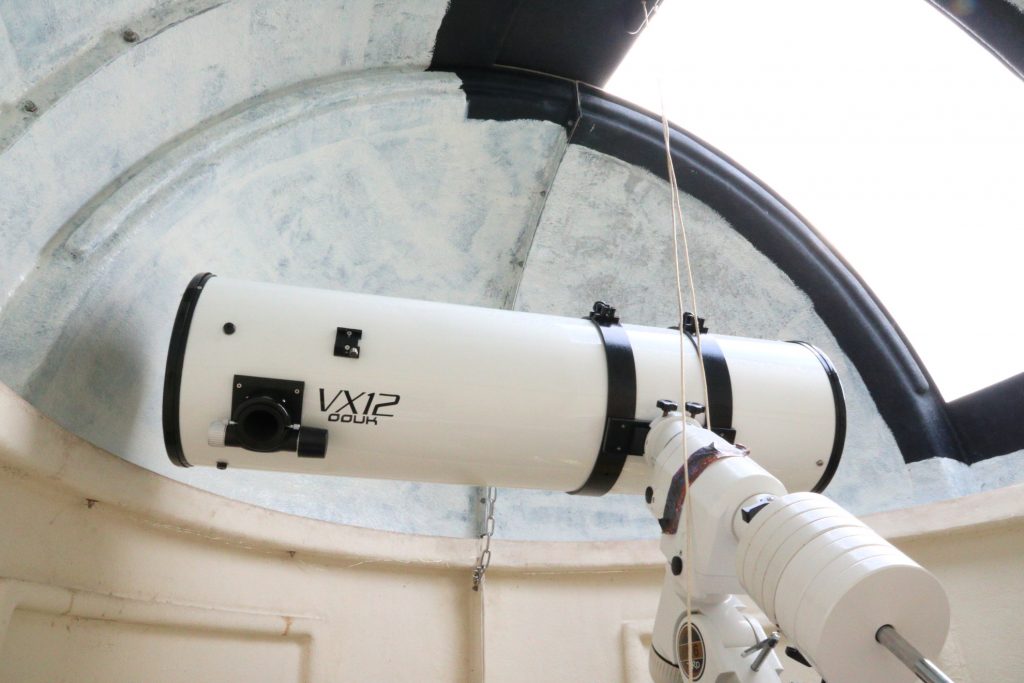2022 May 30
Going Deep – In Pursuit of Z=5
Deep Sky Note #2
After many years of regularly upping stumps and following my employers around the country, I am now approaching full retirement and if the company want to move again, they can flaming well do it without me. Consequently, I have finally been able to assemble a small observatory and am more often able to stay up late – very late.
Because we ended up in south Wiltshire, I had a choice of living amid the bright lights, buzz and metropolitan glamour of Salisbury or being further west in the Cranborne Chase AONB, where a sheep crossing the road warrants a 2 page article in the Parish newsletter. Given that Tescos deliver, Amazon works fine and I don’t exactly follow fast fashion (despite my well deserved reputation for sartorial elegance), we opted for living in an area which, on the Philips light pollution map is dark blue:indicating the sky can be mag 21 on a good night. It’s not La Palma, nor Haleakala, but its pretty good for the south of England.
So, given that I am now likely to stay put for a few years, I have been able to erect an old 2.1m Pulsar dome, which I found being sold second hand locally. Thats a real joy – I have lower back vertebra that personally thank me every single clear night – and my set up time has dropped from 70 minutes to 15 minutes. The dome is not driven but, as I’m now officially ancient, I probably need the exercise of nipping outside to rotate the dome a shove every 30minutes.
Okay, there have been problems with stuff like TP-link refusing to work because the cheap n’ cheerful Chinese switched mode power supplies (SMPS) that powered the mount, CCD, heater and MiniPC were throwing a (subtle) wobbly by chucking lots of noise down the mains line (SMPS have some really fun failure modes which included turning off the CCD cooler and stopping the sidereal tracking randomly due to a floating voltage), but a Wifi repeater means I can now run things from indoors – yay! I will replace all the switched modes with a single linear PSU at some point, but theres no hurry as replacing 2 SMPs sorted most the problem.
So, what have I been doing with this new found freedom? Well, I’ve been doing CCD imaging since 1994 and while I still like taking pictures of striking fields of view, I am under no illusions: there are people out there who do it better. Some achieve it by greater skills, some by better kit and some by sending said nice kit to exotic locations, which lets them let them collect hundreds of hours of data a month! The standard of imaging these days is astonishing. People throw away pictures which would have graced the front cover of Sky&Telescope a decade ago. Also, I never really got into colour or filtered imaging and stayed monochrome, becoming good at dealing with sky gradients instead. Its possible I’m just getting old, stuck in my ways or cranky but, realistically, that probably started decades ago, and I was only practicing then – whereas, now, I seem to be getting good at it, and one should always play to one’s strengths. Consequently, rather than trying to take my “best” picture ever of something attractive, I like to see what can be squeezed out of the kit I have and know what the limits are. The results need only please me, no one else. It doesn’t have to be pretty.
On Christmas Eve I took, somewhat belated, delivery (well we were still in pandemic with messed up supply chains) of a 300mm f/4 Newtonian from Orion Optics UK – which was a bit of a shock as its only my second new OTA purchase in 50 years. A Celestron C14 or Meade 12” SCT OTA would have been nice and less of a squeeze in the small dome, but they were way out of budget and the greater focal length would be better matched with a large format CCD – ideally something like a QHY600 [1] – rather than a Starlight Xpress mono 694.

To read more you need to be a logged in member of the Association. Find out more about the BAA or join us.
[1] IMHO the QHY600 looks a thing of beauty and a joy forever from its specs and is high on my list of desirable items if Santa ever starts delivering to semi-retired, slightly arthitic kids. ↩
| The British Astronomical Association supports amateur astronomers around the UK and the rest of the world. Find out more about the BAA or join us. |
